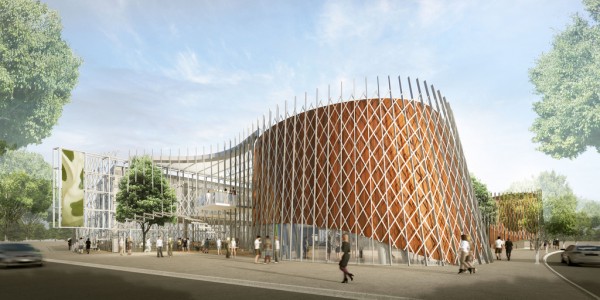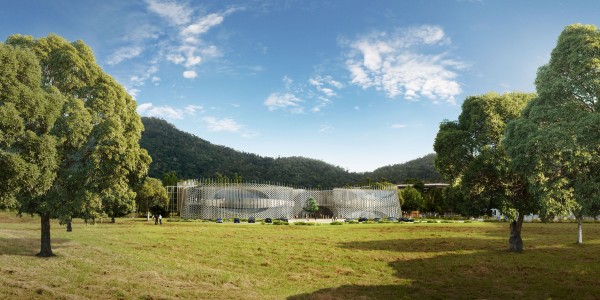The Cairns Institute, the new hub for tropical research is set to re-define teaching and learning in climatic conditions. Proposing a concept that will celebrate the rainforest setting, and enrich the place experience was a winning formula for Queensland based practices, Woods Bagot and RPA Architects who have been awarded the design of The Cairns Institute, headquartered on the James Cook University (JCU) Cairns campus.
A AUS$25 million project, the Institute, located in the north of Queensland, Australia, will be a research hub, housing specialists in the social sciences, humanities, law and business sectors to examine the issues of importance to people in the tropics.
Putting The Cairns Institute and JCU on the international stage to attract post-graduate students from around the globe; and to enable the university to draw a high calibre of researchers was key to the winning design. “Attracting the best researchers was the central aim of the university – it was crucial that our proposed building design would create an environment that optimises the working experience to a point that people would love engaging with the building,” Mark Damant, Principal, Woods Bagot said.
Cradled on three sides by rain-forested slopes, the landscape setting was inherent to the idea of a tropical campus – drawing the rainforest into the campus, enriching the urban campus heart, and in turn stimulating thought leadership from the students. “Intrinsic to our design proposition, was a concept that celebrated the rainforest setting and enriched the place experience. The proposed facade is layered and evolutionary – landscape is encouraged by shape – the building is blurred into the landscape itself,” David Derbyshire, Director RPA Architects said.
The selection of the Woods Bagot Brisbane Studio and RPA Architects, Townsville, was the result of an exhaustive selection process which included a public display in Cairns of the five short-listed designs; with specific design elements attracting attention and positive feedback from the local community.
“A truly imaginative and integrated design solution that was distinctive and uniquely desirable to the JCU community was paramount. We had an opportunity to create a building that represented its place and its context in a new and exciting way – this spurred us on to deliver cutting edge design elements,” Mark Damant, Principal, Woods Bagot continued.
An evolving landscape skin, known as a ‘trellis’ that defines the building and encapsulates aesthetics and sun control, as well as a variety of micro climate ecologies around the building, that are suited to their function and orientation, are some of the design elements that have been proposed. The facades and the internal spaces and functions can be viewed through the trellis. In places the internal elements project through the trellis, and there are holes in the trellis linking internal and external spaces with the landscape.
Furthermore, JCU is aspiring to have the building achieve an equivalent to, or higher than, a Greenstar 5 rating, and therefore it was paramount that the building be rich with ‘future adaptability’ potential. “At the heart of these elements is an underlying commitment by the consortium to not only complement the proposed institute’s current surroundings, but to also enable design to assist in minimising running costs whilst contributing to the quality of environment,” JCU Vice Chancellor Professor Sandra Harding said.
Funded with the assistance of a $19.5 million grant from the Federal Government, the institute will make the Cairns region an engine room for Australian engagement with the tropical world. Construction of the Institute is expected to take a year, beginning in the second quarter of next year. A managing construction contractor is yet to be selected.
















